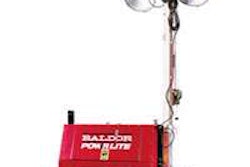by Dale Starry, director, Strategic Technologies, Volvo Construction Equipment
A productive paving project is well choreographed. The four primary elements — plant output, transportation, laydown and compaction — are carefully balanced to achieve best results.
When any one of these items is out of balance, productivity drops.
Most paving contractors know precisely how many tons of mix the asphalt plant is capable of producing on an hourly basis. The contractors know the storage capacity of the silos. Contractors determine whether the plant will be providing mix for only one project or for multiple projects at the same time. If the contractor does not own a plant and must purchase mix from another producer, the number of tons of mix to be purchased is usually a contract item and of predictable supply.
Contractors also know the size and capacity of the transport trucks used to deliver hot mix asphalt (HMA) to the project. From experience, contractors estimate the round-trip transportation time from plant to jobsite and determine how many loads each truck can deliver per unit of time.
When it comes to laydown and compaction, predictions on productivity are less certain. Especially for compaction, the variables of how much HMA is produced and when it is delivered influence the temperature of the asphalt when ompacted.
Mix temperature is the most critical element in compaction. Keeping compactors in the proper rolling zone to achieve target density requires the right rolling patterns.
Best practices of compaction
There are several procedures that compactor manufacturers teach operators to increase productivity. Since nearly all breakdown rolling today utilizes vibratory double-drum compactors, the following best practices concentrate on operating of this type of compactor.
For the full white paper, “Rolling Patterns to Achieve Density and Production,” click here.







